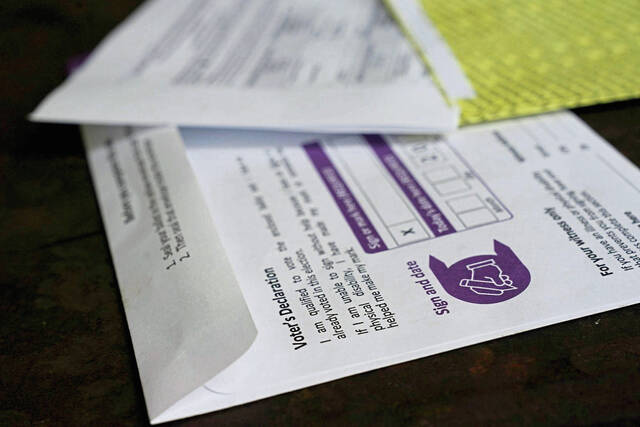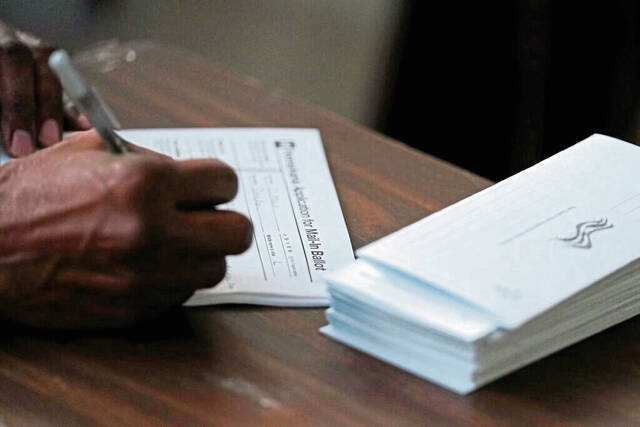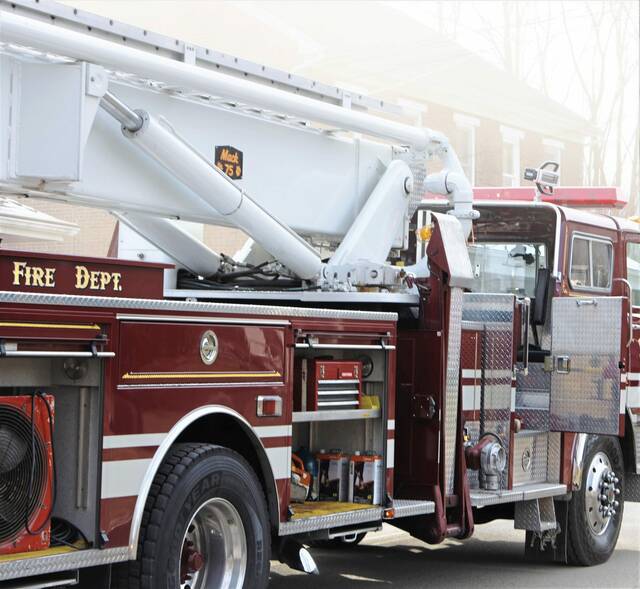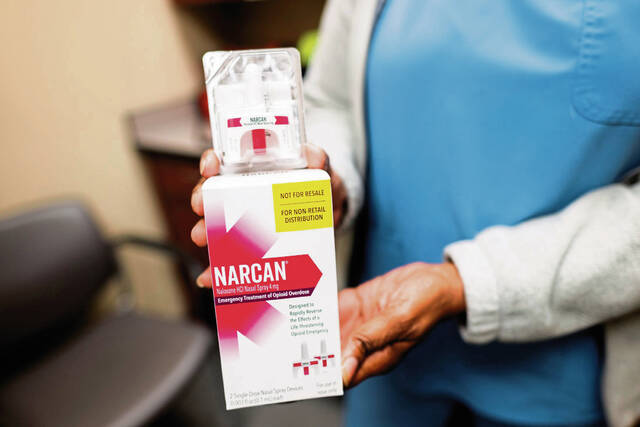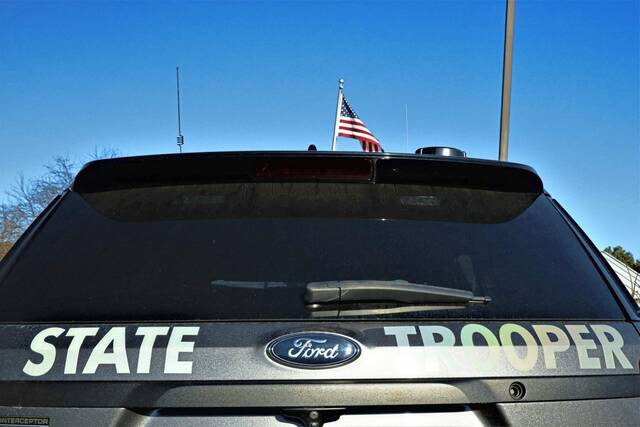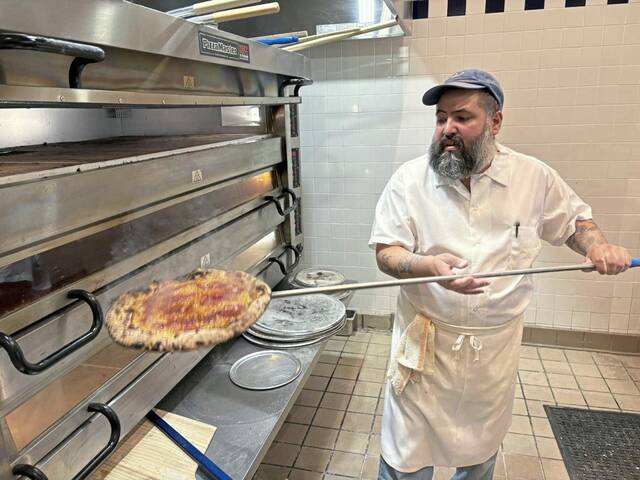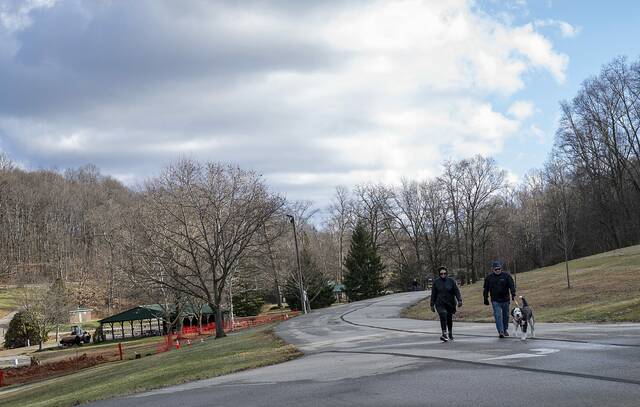Local Republican leaders are pushing voters to get in the game when it comes to mail-in ballots, even if the most prominent voice in the party still is resistant.
“It is important because we’re already starting each election with a deficit,” said Westmoreland GOP Committee Chairman Bill Bretz. “Many Democratic voters have already cast their ballots. On the whole, I would prefer same-day, walk-up voting, but we need to play by the rules.”
Republicans know they have work to do to convince GOP voters that mail-in voting is a viable option.
Party officials and some candidates and elected leaders have called on Republicans to use the early voting system implemented in Pennsylvania ahead of the 2020 election in an effort to compete with Democrats, whose voters have embraced the use of mail-in ballots.
It’s a task made more difficult without the full-throated support of Donald Trump, the party’s presumptive nominee for president who railed against mail-in voting before and after the 2020 election.
It’s a message that continues to resonate with a wide swath of GOP voters.
“It has represented a challenge, but he’s since come out said you need to use all options available to beat the Democrats,” said Sam DeMarco, chairman of the Allegheny County Republican Committee.
According to the latest numbers available from heavily Democratic Allegheny County, more than 22,300 GOP voters requested mail-in ballots for the April primary. DeMarco noted that number is just slightly behind the 24,000 Republicans who voted by mail in the general election in November.
It also falls well short of the number of Democratic voters who are expected to cast mail-in ballots in Allegheny County. More than 99,000 Democrats applied for mail-in ballots this spring, accounting for nearly 82% of applications submitted during the 2024 primary season.
Still, DeMarco was optimistic.
“We’ve made a lot of progress. Many folks who were resistant in the past are no longer resistant,” he said, stressing the importance of banking votes prior to Election Day.
In Westmoreland County, where Republicans hold a significant voter registration edge, about 30% of the more than 27,000 mail-in ballot applications were submitted by GOP voters, Bretz said. That’s one of the largest increases in the state, he said. In the 2023 primary, 14% of the more than 32,000 ballots cast were through the mail-in process, according to election results.
According to data from the Pennsylvania Department of State, about 26% of all mail-in ballot applications submitted across Pennsylvania this spring were requested by Republican voters.
The importance of mail-in and early voting has only grown, GOP officials said. They highlighted results from two special elections this spring: the election for a state House seat in Bucks County, and the race to replace ousted U.S. Rep. George Santos in New York.
A March snowstorm had a significant impact on those races, as inclement weather appeared to suppress Election Day, in-person voting. That helped Democrats win both races on the strength of mail-in and early votes, said Arnaud Armstrong, director of Win Again PAC, a political action committee formed last year in Pennsylvania to promote the use of mail-in ballots among Republicans.
“Democrats have done an excellent job in securing large numbers of mail-in votes, especially among low-turnout and unreliable voters,” Armstrong said. “They’ve invested enormous amounts of time and energy on this issue.”
Trump’s reticence to embrace mail-in ballots continues to have a blunting effect, Armstrong conceded, but he said ongoing social media campaigns and word-of-mouth efforts are slowly turning the tide. Applications for mail-in ballots from Republican voters has increased by about 20% since last year, Armstrong said.
Still, reversing four years of rhetoric has been a challenge.
“Trump is emblematic of where the average Pennsylvania voter is on this issue. They don’t like mail-in ballots,” Armstrong said. “We may not love it, but we have to play the game to win elections.
“For the last year-and-a-half, the message has not been reaching voters in an effective enough way that is addressing their concerns. We have to untangle a knot, and it is a lot of work.”
Concerns about mail-in ballots, such as suspicions they are rejected based on partisan reasons, are unfounded, said Sarah Niebler, an associate political science professor at Dickinson College in Carlisle. Niebler studied the use of mail-in ballots during the 2022 elections and determined there was virtually no difference in rejection rates between Democratic and Republican voters.
Just 1.94% of ballots cast by Democrats and 2.01% by Republicans were rejected that year, according to the study. Younger voters had a slightly higher percentage of mail-in ballots rejected than senior citizens, Niebler said.
“Mail-in ballots overall have a very low rejection rate,” she said, noting the most significant impact on the use of mail-in ballots is messaging. “When the presumed candidate at the top of the ticket is still talking about voter fraud, which is unsubstantiated, it’s an inconsistent message.
“I think it will take time to reverse.”
Bretz agreed but said efforts to change the narrative surrounding mail-in ballots has started to take hold.
“We’ve had a number of poll workers and candidates, even some of the most cynical people, found that people are building confidence in the process,” he said. “We are eroding that cynicism, and people are getting that the gist is it is an appropriate way to cast a ballot.”


